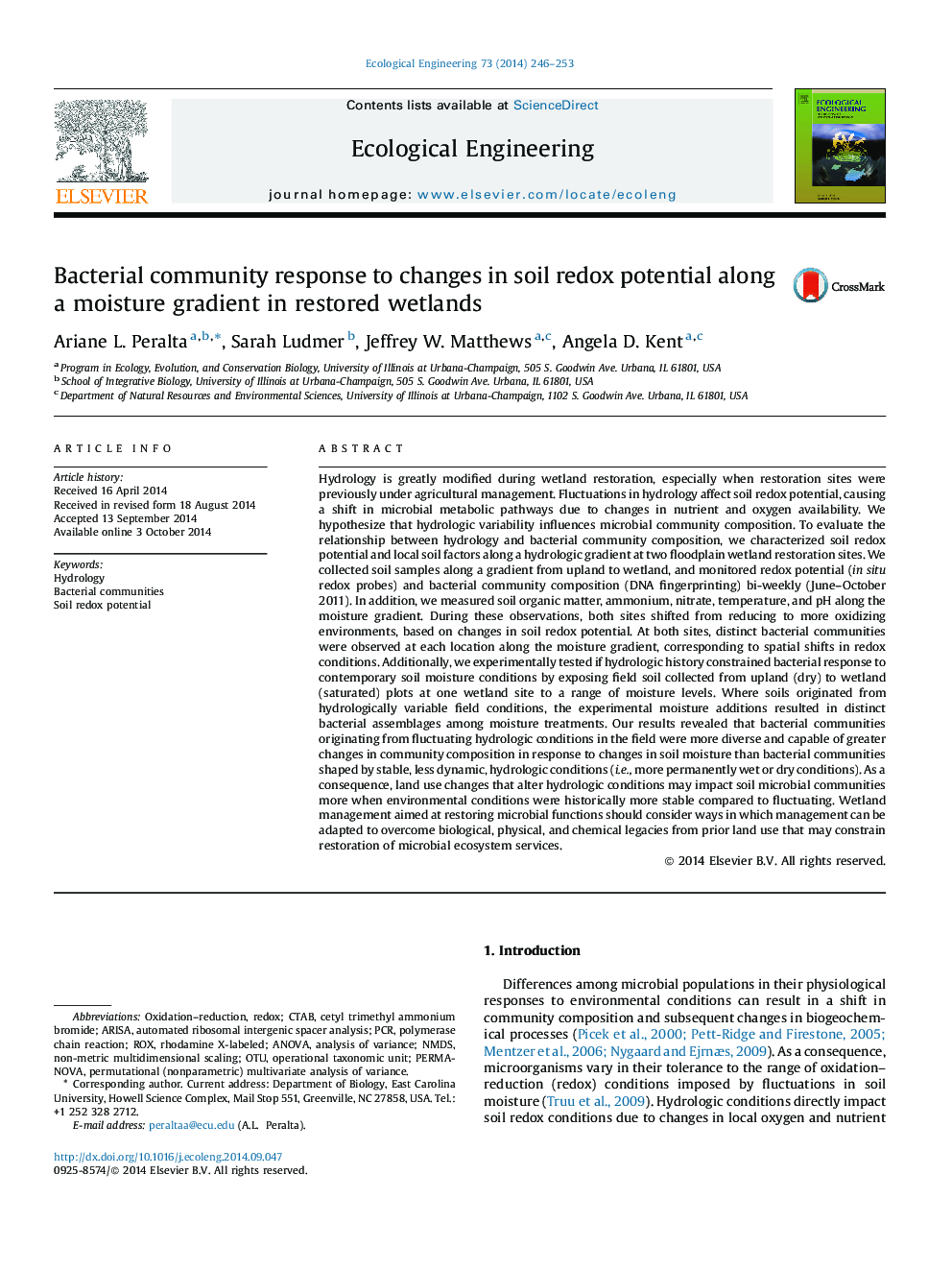| کد مقاله | کد نشریه | سال انتشار | مقاله انگلیسی | نسخه تمام متن |
|---|---|---|---|---|
| 6301907 | 1618026 | 2014 | 8 صفحه PDF | دانلود رایگان |
- Soil redox potential corresponded to changes in bacterial community composition.
- Bacterial community response to changes in hydrology depends on hydrologic history.
- Communities from zones of variable hydrology were most sensitive to moisture treatments.
- Historic environmental variability alters bacterial community response.
Hydrology is greatly modified during wetland restoration, especially when restoration sites were previously under agricultural management. Fluctuations in hydrology affect soil redox potential, causing a shift in microbial metabolic pathways due to changes in nutrient and oxygen availability. We hypothesize that hydrologic variability influences microbial community composition. To evaluate the relationship between hydrology and bacterial community composition, we characterized soil redox potential and local soil factors along a hydrologic gradient at two floodplain wetland restoration sites. We collected soil samples along a gradient from upland to wetland, and monitored redox potential (in situ redox probes) and bacterial community composition (DNA fingerprinting) bi-weekly (June-October 2011). In addition, we measured soil organic matter, ammonium, nitrate, temperature, and pH along the moisture gradient. During these observations, both sites shifted from reducing to more oxidizing environments, based on changes in soil redox potential. At both sites, distinct bacterial communities were observed at each location along the moisture gradient, corresponding to spatial shifts in redox conditions. Additionally, we experimentally tested if hydrologic history constrained bacterial response to contemporary soil moisture conditions by exposing field soil collected from upland (dry) to wetland (saturated) plots at one wetland site to a range of moisture levels. Where soils originated from hydrologically variable field conditions, the experimental moisture additions resulted in distinct bacterial assemblages among moisture treatments. Our results revealed that bacterial communities originating from fluctuating hydrologic conditions in the field were more diverse and capable of greater changes in community composition in response to changes in soil moisture than bacterial communities shaped by stable, less dynamic, hydrologic conditions (i.e., more permanently wet or dry conditions). As a consequence, land use changes that alter hydrologic conditions may impact soil microbial communities more when environmental conditions were historically more stable compared to fluctuating. Wetland management aimed at restoring microbial functions should consider ways in which management can be adapted to overcome biological, physical, and chemical legacies from prior land use that may constrain restoration of microbial ecosystem services.
Journal: Ecological Engineering - Volume 73, December 2014, Pages 246-253
